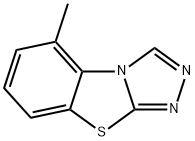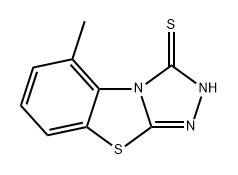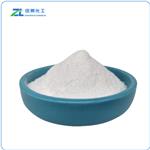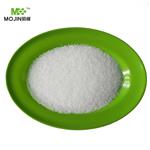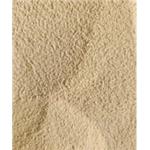Description
log Kow: 1.4. Solubility: In water at 25 ?C,
1.6 g/L. In acetone 10.4, methanol 25, xylene 2.1 (all in
g/l, 25 ?C). Stability: Stable at 52 ?C. Relatively stable
to ultraviolet light.
Uses
Tricyclazole is an common active ingredient in several commercial fungicide products used to control rice blast fungus, in transplanted and direct-seeded rice.
Definition
ChEBI: A triazolobenzothiazole that is [1,2,4]triazolo[3,4-b][1,3]benzothiazole which is substituted at position 5 by a methyl group. A fungicide used for the control of rice blast, it is not approved for use within the European Union.
Metabolism
Animals: Rapid and extensive metabolism.
Plants: The principal metabolite is the hydroxymethyl
analog.
Soil/Environment: Kd 4 (loamy sand, pH 6.5, 1.5%
o.m.), 45 (loam, pH 5.7, 3.1% o.m.), 21 (clay loam, pH 7.4,
1.9% o.m.), 22 (silty clay loam, pH 5.7, 4.1% o.m.).
Toxicity evaluation
Mammalian toxicology. Oral: Acute oral LD
50
for rats 314, mice 245, dogs >50 mg/kg. Skin and eye:
Acute percutaneous LD
50 for rabbits >2000 mg/kg. Slight
eye irritant; nonirritating to skin (rabbits). Inhalation:
LC50 (1 h) for rats 0.146 mg/L air. NOEL: (2 yr) for
rats 9.6 mg/kg b.w.; for mice 6.7 mg/kg b.w.; (1 yr) for
dogs 5 mg/kg b.w.; 3-generation reproduction for rat
3 mg/kg b.w. ADI: 0.03 mg/kg.
Toxicity class: World
Health Organization (WHO) (a.i.) II; U.S. Environmental
Protection Agency (EPA) (formulation) II RC risk Xn
(R22). Ecotoxicology. Birds: Acute oral LD
50 for mallard
ducks and bobwhite quail >100 mg/kg. Fish: LC50 for
bluegill sunfish 16.0, rainbow trout 7.3, goldfish fingerlings
13.5 mg/l. Daphnia: LC50 (48 h) > 20 mg/l; NOEC (21 d)
0.96 mg/L.
